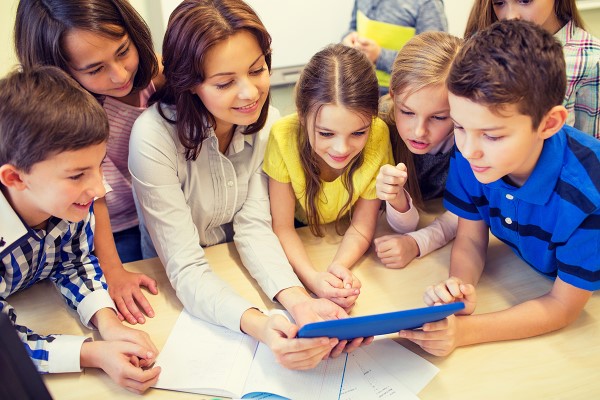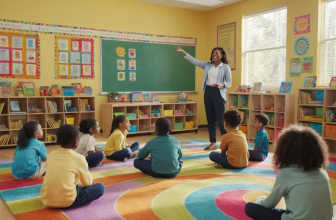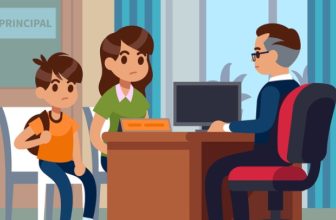
Explore engaging social studies activities for middle school students in this comprehensive guide.
In the world of education, the significance of social studies cannot be overstated. It serves as the foundation for understanding our society, culture, and the world at large. For middle school students, social studies plays a pivotal role in shaping their knowledge and perspective. In this section, we’ll delve into why social studies education is crucial during these formative years.
Middle school is a transitional phase where students are exposed to a wider range of subjects. Social studies, often overlooked, offers a unique perspective on history, geography, culture, and current events. Here are some key reasons why social studies education matters for middle schoolers:
- Cultivating Global Awareness: Middle school is a time when students start developing a broader worldview. Social studies introduces them to different cultures, societies, and historical events from around the world, fostering empathy and global awareness.
- Building Critical Thinking: Social studies encourages critical thinking and problem-solving skills. Students analyze historical events, political decisions, and societal issues, helping them become informed and responsible citizens.
- Connecting Past and Present: Understanding history is essential for comprehending current events. Social studies bridges the gap between the past and the present, allowing students to grasp the significance of historical events on today’s world.
- Promoting Civic Engagement: Middle school is the perfect stage to instill a sense of civic responsibility. Social studies education empowers students to engage in civic activities, participate in mock elections, and understand the democratic process.
Benefits of Interactive Learning in Middle School Social Studies
Now that we’ve established the importance of social studies education, let’s explore how interactive learning can enhance the experience for middle school students. Interactive learning methods are designed to actively engage students, making the subject matter more captivating and memorable.
- Role-Playing Historical Figures: This hands-on activity allows students to step into the shoes of historical figures. They research and embody the character, gaining a deeper understanding of historical events and the people behind them.
- Virtual Museum Tours: With the advancement of technology, students can embark on virtual museum tours. These immersive experiences bring history to life, allowing students to explore artifacts and historical sites from the comfort of their classroom.
Geography and Cultural Activities
Geography and cultural awareness are integral aspects of social studies. They broaden students’ horizons and help them appreciate the diversity of our world.
- World Map Challenges: Middle schoolers can engage in map challenges that test their geographical knowledge. Activities like map quizzes and identifying countries and capitals make learning geography fun.
- Cultural Exchange Projects: Encourage students to explore different cultures through research projects, presentations, and even international pen-pal exchanges. This fosters cultural understanding and appreciation.
Current Events and Civics Engagement
Teaching current events and civics in middle school is a vital part of social studies education. It equips students with the knowledge and skills needed to actively participate in their communities.
- Mock Elections: Organizing mock elections allows students to experience the democratic process firsthand. They can campaign, vote, and understand the importance of civic participation.
- Community Service Projects: Engaging in community service projects tied to social issues not only teaches empathy but also empowers students to be agents of positive change in their communities.
Resources and Tools for Teachers and Parents
Supporting social studies education in middle school requires collaboration between teachers, parents, and students. Here are some valuable resources and tools:
- Online Educational Platforms: Websites and platforms dedicated to social studies offer a wealth of resources, including lesson plans, interactive activities, and informative articles.
- Library Resources: Libraries are treasure troves of books, documentaries, and reference materials that complement social studies curriculum.
- Parent Involvement: Parents can actively engage by discussing current events with their children, visiting historical sites, and encouraging curiosity about the world.
Conclusion and Encouragement for Ongoing Learning
In conclusion, social studies education for middle school students is a gateway to understanding the world around them. It empowers them to become informed, empathetic, and engaged citizens. By incorporating interactive learning, exploring geography and culture, and fostering civic engagement, we can make social studies a captivating and enriching experience.
As educators, parents, and students, let’s embrace the opportunities social studies offers and continue on this journey of lifelong learning. Together, we can shape a generation that is well-informed, culturally aware, and actively contributing to society.
FAQs
Q: What are the benefits of social studies education in middle school?
A: Social studies education in middle school cultivates global awareness, critical thinking, historical understanding, and civic engagement.
Q: How can I make social studies more engaging for middle school students?
A: Incorporate interactive learning methods such as role-playing historical figures, virtual museum tours, and hands-on projects.
Q: What are some hands-on historical exploration activities?
A: Hands-on historical exploration includes role-playing, museum tours, and research projects focused on historical figures and events.
Q: How can I incorporate geography and cultural awareness into the curriculum?
A: Use map challenges and cultural exchange projects to enhance students’ geographical knowledge and cultural understanding.
Q: What are effective ways to teach current events and civics in middle school?
A: Organize mock elections, engage in community service projects, and encourage discussions about current events.
Q: Where can I find additional resources and support for teaching social studies to middle schoolers?
A: Online educational platforms, libraries, and parent involvement are valuable resources for enhancing social studies education.
Fun Social Studies Activities for Middle School Students
Teaching students about different cultures and societies around the world can be made fun with many fun social studies activities for middle school students. One activity that can be used is the global word wall cards game. This game can be done by having the students use their word power to write a word with one of the five continents from around the world. Two teams of four students are each given a continent and the teacher chooses which continents form part of their team’s word wall.
- The students are then given an outline of what each word represents in the global language. Students can help to create their own words by drawing it out with the help of a friend or parent. Then, they are shown a picture of their word and asked to translate it into its meaning in their own language. After reading the definition of the word, the students are asked to find examples from their own culture and countries to see how these terms are used. A great activity that can be used in the classroom is to compare the way the word is used between cultures.
- Another fun social studies activity for middle school students that can be used in the classroom is the debate club game. In this game, the students must divide themselves into teams and the goal is for each team to eliminate all the other team members until there is only one team left. The goal for the first group is to find all the facts while the second group tries to find the most arguments to prove their point. This game can also be used to determine the learning process among younger children.
- A final activity that can be used in the classroom is the geography resources activity. This activity involves looking at various maps and comparing the ones that are based on actual maps with those that are not based on real maps. Students will then create a map from the actual state they are living into the state that they are going to be visiting in the future. The purpose of this activity is to allow students to see and appreciate all of the geographical resources that are available to them. Students will learn how to map weather patterns, transportation routes, cultural communities, and more.
- Students will learn about all three of the Earth’s continents, the Ocean, and the Seas by looking at these different maps. The oceanic side of the earth includes the oceans, seas, and lakes while the continental side of the earth includes the US, Europe, Asia, and Africa. By looking at these maps, students will get a better understanding of how these various bodies of water fit together and why they are separated. Students will also gain important map skills through learning about cartography. Cartography is the art of creating a map using accurate measurements and mapping software.
The best summer reads for teachers can come from digital learning. The information that students are able to access in this way is constantly updated allowing them to study it as the need arises. Teachers can use their own computer or access the internet for some online activities. These activities include games, puzzles, and reading activities that will help enhance a classroom environment. With the best summer reads for teachers, students will learn how to use a variety of resources within their curriculum to provide the most beneficial learning experience.



